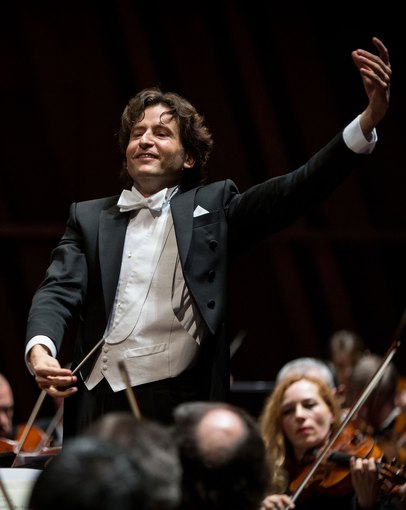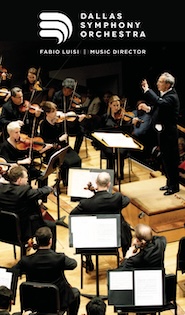Two Russian masters (and a talented Scot) receive their due from Gimeno, DSO

Gustavo Gimeno conducted the Dallas Symphony Orchestra Thursday night. File photo: Alfonso Salgueiro
Two landmarks of the Russian symphonic tradition and the American premiere of a new work by a British composer made an impressive showcase for Spanish-born guest conductor Gustavo Gimeno, who led the Dallas Symphony Orchestra Thursday night at Meyerson Symphony Center.
Tchaikovsky’s Sixth Symphony (“Pathetique”) and Prokofiev’s First Symphony (“Classical”), composed in the same country less than twenty years apart, represent utterly opposite views of the symphony as a genre. For his part, Gimeno, currently music director of the Luxembourg Philharmonic, brought the same elegant and expressive control to both works while delving meaningfully into the distinctive philosophies that inform both.
Prokofiev’s First, completed in 1917, charges into the twentieth century while evoking the lean textures and pure energy of Haydn’s symphonies of a century earlier. Gimeno announced his own high-voltage approach to this music by bursting into the opening fortissimo with the just the right balance of energy and discretion before sliding into the light, chamber-like qualities of the second theme.
In the second movement, he managed a fine, impressively lean tone as the violins floated above the orchestra in that delicate main theme. Just as Prokofiev created a perfect marriage of twentieth-century harmony and eighteenth-century structure in the Gavotte third movement, there, too, Gimeno finely balanced clarity and energy. He continued to create a happy mix of forcefulness and style in the muscular finale.
While Prokofiev’s First Symphony is all about energy and structure, Tchaikovsky’s Sixth focuses on instinct and emotion; its strength lies in the composer’s inimitable ability to remake traditional symphonic form as a vessel of personal anguish. Gimeno here wisely opened with restraint and an emphasis on line and lucidity, even in the first statement of the famous secondary theme. All of this, of course, effectively intensified the quick mood swings and outbursts that followed.
The second movement also progressed with miraculous timing on the part of Gimeno, from its lilting, lopsided 5/4 waltz theme to a burnished climax. In the march-like third movement, he continued to demonstrate his knack for building tension and excitement through restraint before arriving at the movement’s desperately triumphal moments. At that peak of what seems to be joy and hope, Gimeno then gave the audience a full second of silence before launching the sorrowful finale and reveling in the tragedy Tchaikovsky poured into his final major symphonic essay.
Gimeno’s performance reminded one that, overworked as it may be in the repertoire, Tchaikovsky’s Sixth is a masterful example of symphonic form and expression that completely deserves its status as an audience favorite. Every conductor has to have this work in his or her repertoire, and every conductor needs a vital and unique approach to this very familiar material. In this concert, Gimeno demonstrated an absolute understanding of the cathartic power of this music and the architectural innovation Tchaikovsky created here.
Between the two Russian symphonies, the concert featured the U.S. premiere of Scottish composer James MacMillan’s Trombone Concerto of 2016, with Jörgen van Rijen, the Dutch-born trombonist for whom the work was written, as soloist. This is a grandly ambitious and assertive work, cast in a single, continuous and eventful rhapsodic movement. Van Rijen entered with a muted solo over a spooky, cloud-like texture created by percussion and strings, and he eventually emerged aggressively, but with an unfailingly controlled and burnished tone.
Conductor Gimeno and the orchestra maneuvered steadily through the score’s obvious complexities. Intriguing moments in the largely noisy, generally lively work included infectious dance-like passages, a viola solo picked up from a sustained trombone note, and a raucous, jungle-like musical conversation between the soloist — turning his back to the audience — and the three orchestral trombones standing up at the back of the orchestra. A surprising shift in the composition’s harmonic idiom produces a grandly tonal coda for the concerto, and the audience on Thursday responded to this unexpected turn with an enthusiastic and cheering ovation.
The program will be repeated at 7:30 p.m. on Friday and Saturday at Meyerson Symphony Center, and at 2:30 p.m. Sunday. mydso.org; 940-297-7943
